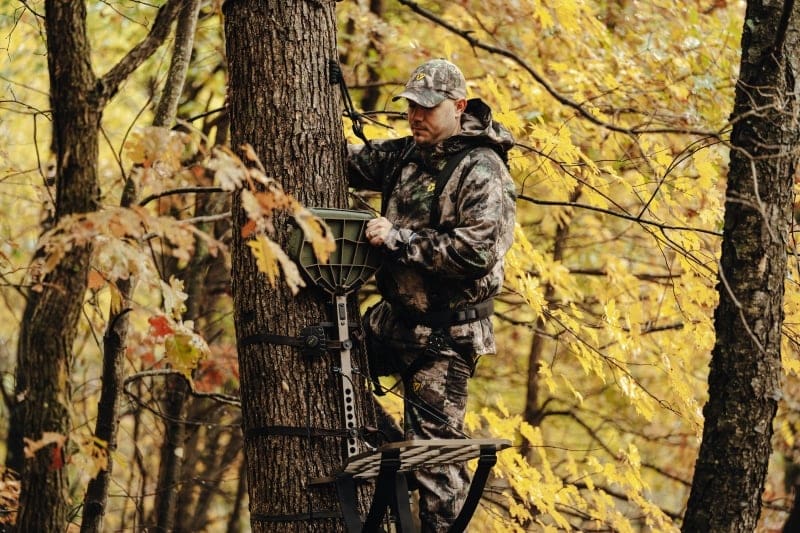For deer hunters, the “October Lull” is a phrase that sparks heated debate. Some swear by it, while others dismiss it as a myth. The theory of the October lull suggests that as October rolls in, deer movement, particularly that of mature bucks, decreases drastically. Many hunters, especially those with experience, claim that deer become far less active during daylight hours around the second or third week of October, leading to the “lull.” But is this widely held belief rooted in reality, or is it just another hunting myth? If mid-October is such a dreaded time for deer hunters, why do so many eagerly say during the summer, “I can’t wait to be in a treestand come October”? Early-season bucks are often easier to pattern, and the November rut is considered the Super Bowl of deer hunting. But could October present more challenges, leaving hunters searching for reasons they haven’t harvested a buck?

What Is the October Lull?
The October lull is often described as a period, typically in the second to the third week of October, when deer—especially bucks—seem to become nocturnal, and daytime activity drops significantly. Hunters who follow this theory often believe that deer become more cautious and less likely to expose themselves during daylight after the initial excitement of early-season hunting. The lull isn’t a time when bucks mysteriously vanish. Instead, the disappearing act can commonly be explained by a combination of factors, including hunting pressure, as more hunters enter the woods in October when temperatures cool off; compared to that during the early season, deer may sense the increased presence and adjust their behavior to avoid danger.
Environmental changes are another theory and explanation of why many hunters, including myself, consider the lull a hoax.Cooler temperatures, increased leaf fall, and shifting toward the pre-rut may alter deer movement patterns. Yet, one of the most significant impacts of seeing deer movement during the first few weeks of October is acorns.
With crops being harvested and natural food sources changing, deer may adjust their feeding habits to move less during daylight, seeking food in more secure areas. For myself, I have witnessed deer changing their patterns and becoming less visible as soon as the white oak acorns begin falling. It is their preferred food, so they leave all other food sources for acorns. Typically, acorns are in the deep timber or thicker cover, leaving deer less visible from their usual areas.
For many hunters, this lull is seen as a frustrating slowdown, a period where deer sightings become scarce and hunts feel less productive. Some even believe staying out of the woods is better until the pre-rut kicks in later in October. Is that ridiculous, or is it a good idea?

Is the October Lull a Hoax?
Despite the widespread belief in the October lull, many experts argue it’s a hoax—a self-fulfilling prophecy created by human error and misunderstanding of deer behavior. Research into deer movement has cast doubt on the existence of the October lull. Studies tracking GPS-collared deer have shown that deer movement does not necessarily decrease in mid-October. Instead, these studies suggest that deer may adjust their movement patterns, shifting to different areas based on factors like food availability, hunting pressure, and changes in habitat. Contrary to the idea of a lull, deer are still moving; they may just be avoiding the areas where they sense danger or where hunters have been most active. Some research suggests that while deer may become more cautious during daylight hours, this has more to do with human activity and changing environmental factors than a “lull.”
Another argument is that hunters themselves create the October lull. As hunting season kicks off in early October, hunters are often eager to enter the woods. By mid-October, some may become less enthusiastic or burnt out from long hours without success, assuming the deer have “disappeared.” But what happens is that deer become more aware of the increased human activity, forcing them to adapt by avoiding frequently hunted areas during daylight. This gives the impression of a lull when, in reality, deer have shifted their behavior to avoid danger or have gone to food.
How to Hunt During the October Lull
Whether you believe in the October lull or not, the period can present challenges. But by adjusting your hunting strategy, you can still find success during this time. We have waited on this all year; why quit in the middle of the season?
Deer may not stop moving, but they will adjust where and when they travel. During the October lull, switching up your hunting locations is crucial. Deer often become more wary of well-traveled routes, so look for areas that are harder to access or less pressured by other hunters. This might mean going deeper into the woods or scouting areas that have received less attention. Deer are still feeding and bedding during this time, so concentrate on hunting the transition areas between bedding and feeding sites, especially close to thick cover where they feel safe. The deer have likely patterned you if you’ve been hunting the same stand since opening day. Switch stands frequently to keep them guessing.
Many hunters associate mid-October with diminished morning and evening deer activity. But midday can be one of the most productive times to hunt during the lull. Mature bucks, especially, are more likely to move during the middle of the day when human activity is at its lowest. Set up near bedding areas or thick cover where deer may stage before moving to feeding sites later in the day.
As October progresses, natural food sources like acorns become more plentiful, and deer will target these high-calorie foods. Adjust your strategy by finding the primary food sources in your area and setting up nearby. Deer may feed heavily on acorns, persimmons, or other local forage, so scouting for these food sources is essential.
If deer are reacting to hunting pressure, minimizing your impact is vital. Pay attention to how you enter and exit your hunting area and avoid alerting deer to your presence by practicing scent control and staying as quiet as possible. Reducing pressure is especially important in areas where deer are already wary of human activity.
Weather can also significantly influence deer movement during October. Cold fronts can trigger increased daytime movement as deer prepare for the rut and shift their feeding patterns. Pay attention to weather changes and plan your hunts around these critical times. A drop in temperature or increased wind can also be the catalyst for bucks to break from their nocturnal patterns.

Should You Ignore the October Lull?
In short, yes—ignore the October lull. Whether you believe it’s a real phenomenon or a self-created myth, it doesn’t mean deer have vanished. Successful hunters know that deer are still active during this time but may require different tactics to find and harvest. Adapt your strategy, stay persistent, and keep hunting through the lull rather than sitting out. Deer may not be as visible, but you can still fill your tag with the right approach.
The October lull may feel real to many hunters, but it’s more likely a combination of changing deer behavior and human influence. Instead of letting the lull discourage you, use it to refine your strategy. Deer are still out there, moving, feeding, and preparing for the rut. By adjusting your locations and hunting times and understanding deer habits during this period, you can stay ahead of the game and make the most of your October hunts. So, hoax or not, don’t let the “lull” keep you out of the woods.


